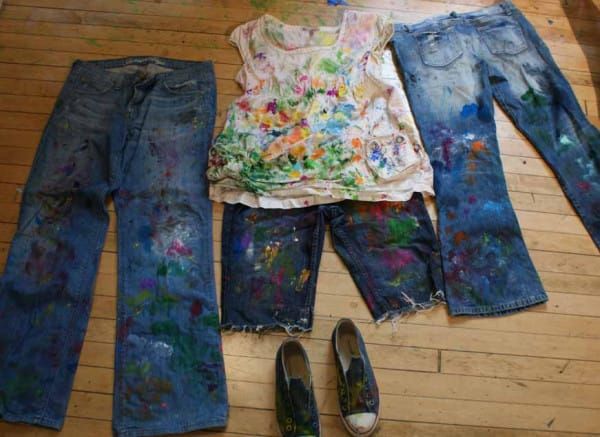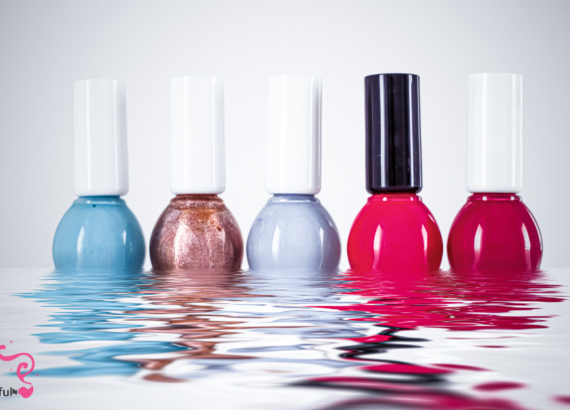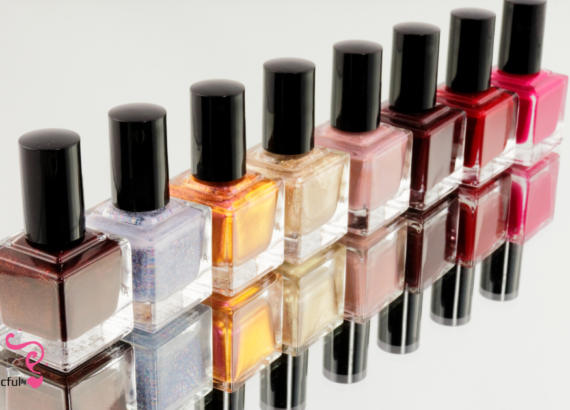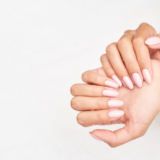How to Remove Acrylic Paint from Clothes: A Comprehensive Guide

Acrylic paint is a beloved medium among artists, crafters, and DIY enthusiasts due to its vibrant colors, versatility, and quick-drying properties. However, these same qualities can make it a daunting challenge when it accidentally splatters on clothing. If you find yourself in this predicament, don’t worry! This extensive guide will walk you through various methods to effectively remove acrylic paint from clothes, ensuring that your garments are saved from permanent stains. Whether you’re dealing with a fresh spill or a dried, stubborn stain, this article covers all the steps you need to take to restore your clothing to its former glory.
I. Understanding Acrylic Paint
Before diving into removal techniques, it’s essential to understand what you’re dealing with. Acrylic paint is water-based when wet but becomes water-resistant once dry. This characteristic makes it relatively easy to clean when fresh but much more challenging once it has set. Acrylic paint is composed of pigment particles dispersed in an acrylic polymer emulsion, and it dries quickly because the water evaporates, leaving behind a plastic-like film. Therefore, acting quickly can significantly increase your chances of successfully removing the paint.
II. Immediate Steps for Wet Paint
If the paint is still wet, you’re in luck! Here are the immediate steps you should take to remove acrylic paint from clothes:
1. Act Quickly
The sooner you address the stain, the better. Wet acrylic paint is much easier to remove than dry paint. Once the paint dries, it bonds with the fibers of the fabric, making it more difficult to remove. Prompt action is crucial to prevent the paint from becoming a permanent stain.
2. Blot, Don’t Rub
Use a clean cloth or paper towel to blot the excess paint gently. Rubbing can push the paint deeper into the fabric fibers, making the stain larger and more difficult to remove. Blotting helps lift the paint off the surface of the fabric.
3. Rinse with Cold Water
Hold the stained area under cold running water. This helps to flush out the paint before it sets. Direct the water flow from the back of the fabric to push the paint out rather than further into the fabric. Avoid using hot water, as it can cause the paint to set more quickly.
4. Removing Dry Acrylic Paint
If the paint has dried, it requires a bit more effort but can still be removed with the right techniques. Here are several methods to try, ranging from household items to commercial cleaners.
1: Using Soap and Water
- Scrape Off Excess Paint: Use a blunt knife, spoon, or a plastic scraper to gently scrape off as much dried paint as possible. Be careful not to damage the fabric while doing this. Removing the excess paint will make the subsequent cleaning steps more effective.
- Soak in Soapy Water: Fill a basin with warm water and add a few drops of dish soap. Submerge the stained garment and let it soak for about an hour. The soapy water will help to loosen the paint from the fabric fibers.
- Scrub the Stain: After soaking, use a soft brush or a toothbrush to gently scrub the stain. The soap should help break down the paint. Be patient and avoid using too much force to prevent damaging the fabric.
- Rinse and Repeat: Rinse the garment with cold water to remove the soap and loosened paint. If the stain is still visible, repeat the soaking and scrubbing process until the paint is removed or no longer comes off.
2: Using Rubbing Alcohol
- Apply Rubbing Alcohol: Dampen a cotton ball, cloth, or sponge with rubbing alcohol (isopropyl alcohol) and dab it onto the stain. Let it sit for a few minutes to allow the alcohol to penetrate and soften the paint.
- Scrub the Stain: Use a soft brush or toothbrush to gently scrub the area. The alcohol will help dissolve the paint, making it easier to lift from the fabric.
- Rinse with Cold Water: Rinse the garment thoroughly with cold water to remove the alcohol and paint residue.
- Launder as Usual: Wash the garment according to the care instructions. Check the stain before drying; if any paint remains, repeat the process.
3: Using Vinegar and Ammonia Solution
- Prepare the Solution: Mix one part white vinegar, one part ammonia, and two parts warm water in a bowl. Vinegar helps to break down the paint, while ammonia acts as a solvent to loosen it from the fabric.
- Soak the Stain: Soak a cloth in the solution and place it over the stain for about 30 minutes. Ensure the stained area is fully saturated with the solution.
- Scrub the Stain: After soaking, gently scrub the stain with a soft brush or toothbrush. The combined action of the vinegar and ammonia should help lift the paint from the fabric.
- Rinse and Wash: Rinse the garment thoroughly with cold water to remove the cleaning solution and loosened paint. Wash the garment as usual and check the stain before drying. If necessary, repeat the process.
4: Using Acetone (Nail Polish Remover)
- Test on a Small Area: Before applying acetone, test it on a small, inconspicuous area of the fabric to ensure it doesn’t cause damage or discoloration.
- Apply Acetone: Dab a small amount of acetone onto the stain using a cloth or cotton ball. Let it sit for a few minutes to soften the paint.
- Scrub Gently: Use a soft brush or toothbrush to scrub the stain gently. The acetone will help break down the paint for easier removal.
- Rinse and Launder: Rinse the garment thoroughly with cold water to remove the acetone and paint residue. Launder the garment according to the care instructions. Check the stain before drying; if any paint remains, repeat the process.
III. Special Considerations
When attempting to remove acrylic paint from clothes, it’s important to consider the type of fabric and the intensity of the stain. Different fabrics require different approaches and care.
1. Fabric Type
Different fabrics react differently to various cleaning agents. Delicate fabrics like silk and wool require gentler methods, while sturdy fabrics like cotton and denim can withstand more vigorous scrubbing and stronger chemicals. Always check the care label on your garment before attempting any stain removal method.
- Delicate Fabrics: For silk, wool, and other delicate materials, avoid harsh chemicals and aggressive scrubbing. Use mild soap and gentle blotting to remove the paint.
- Sturdy Fabrics: Cotton, denim, and polyester can typically handle more robust cleaning methods, including the use of rubbing alcohol, vinegar, and acetone.
2. Colorfastness
Always check for colorfastness before applying any cleaning solution to a visible area of the garment. Some chemicals can cause colors to fade or bleed, ruining the garment further. Test the cleaning solution on a hidden seam or an inside hem to ensure it doesn’t affect the fabric’s color.
IV. Commercial Paint Removers
If household methods fail to remove the acrylic paint stain, you might consider using a commercial paint remover designed specifically for fabrics. These products are formulated to break down paint without damaging the fabric. Follow the instructions on the product carefully and test it on a small, inconspicuous area first.
V. Preventive Measures
Prevention is always better than cure. Here are some tips to avoid acrylic paint stains on your clothing in the first place:
- Wear Protective Clothing: When working with acrylic paint, wear old clothes or protective aprons to avoid accidental spills. Designate specific clothing for painting and crafting activities.
- Cover Surfaces: Use drop cloths, newspapers, or plastic sheets to protect surfaces and minimize the risk of paint splatters. This also helps in keeping your workspace clean and organized.
- Keep Cleaning Supplies Handy: Have a cleaning kit ready with soap, rubbing alcohol, acetone, and other supplies to address spills immediately. Quick action can prevent stains from setting.
- Work in a Controlled Environment: Set up your painting or crafting area in a controlled environment where you can manage spills and splatters more effectively. This could be an outdoor space or a well-ventilated room with washable surfaces.
VI. Professional Help
If you’ve tried multiple methods and the stain persists, it might be time to seek professional help. How to Remove Acrylic Paint from Clothes? Dry cleaners have specialized solvents and equipment that can effectively remove stubborn stains. Inform them about the nature of the stain and the fabric type so they can choose the appropriate cleaning method.
FAQs
Q1: Can acrylic paint be removed from clothes after it has dried?
Yes, acrylic paint can be removed from clothes even after it has dried, but it requires more effort and specific cleaning methods. Using household items like rubbing alcohol, vinegar, and soap, or commercial paint removers, can help lift dried paint from fabric.
Q2: Will acetone damage my clothes?
Acetone is a strong solvent and can potentially damage certain fabrics, especially synthetic materials like acetate and some types of polyester. Always test acetone on a small, hidden area of the fabric first to ensure it doesn’t cause damage or discoloration.
Q3: Can I use a washing machine to remove acrylic paint stains?
While a washing machine can help remove paint residues after initial stain treatment, it is not effective for removing acrylic paint stains on its own. Pre-treat the stain using the methods described above before laundering the garment.
Q4: Is it safe to use ammonia on all fabrics?
Ammonia can be effective in removing paint stains but may not be safe for all fabrics, particularly delicate or non-colorfast materials. Always test a small, inconspicuous area first and follow the garment’s care instructions.
Conclusion
How to Remove Acrylic Paint from Clothes? Removing acrylic paint from clothes can be challenging, but with patience and the right techniques, it is often possible to salvage your garments. Whether dealing with fresh spills or stubborn dried stains, acting quickly and using appropriate cleaning methods are key to success. Remember to consider the type of fabric and always test cleaning solutions on a hidden area first. By following these comprehensive steps, you can tackle acrylic paint stains with confidence and keep your clothes looking their best.








